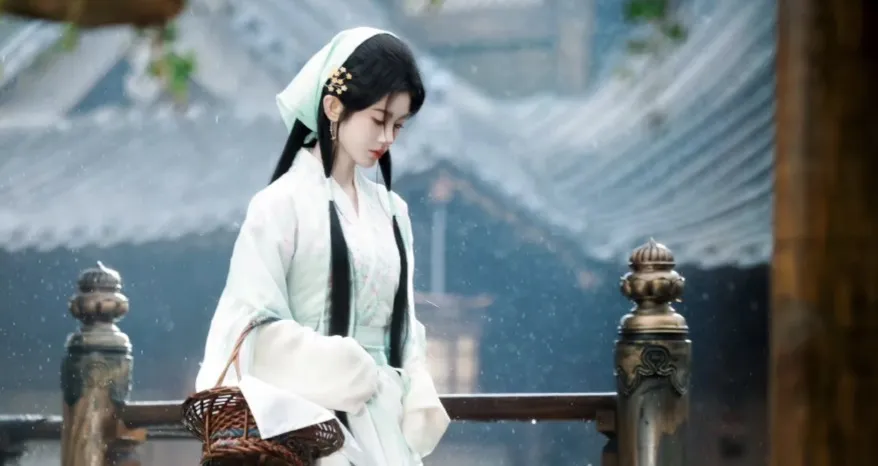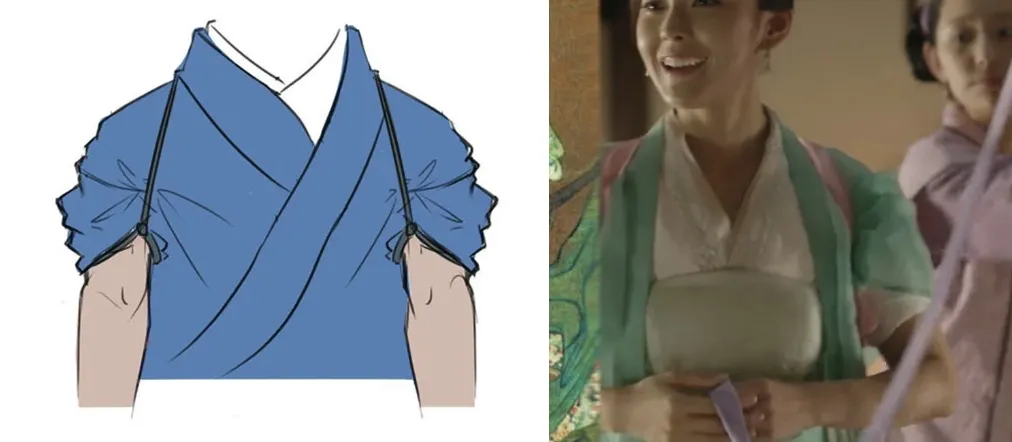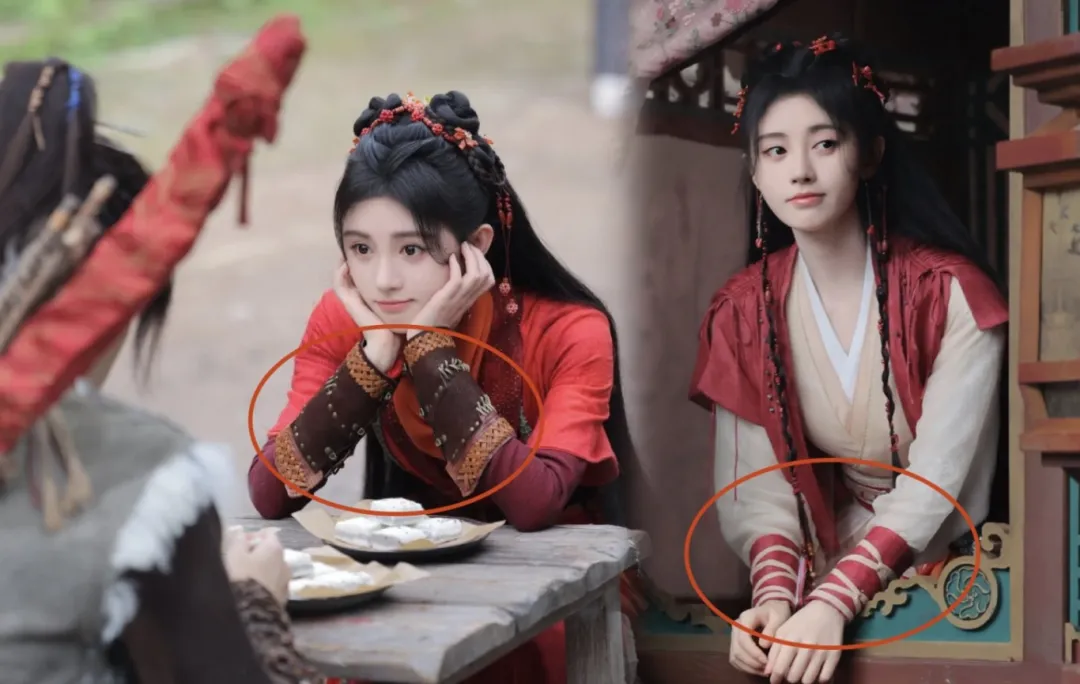Ju Jingyi: Who Knew a Shoulder Strap Could Be So Versatile? Recently, a behind - the - scenes photo of Ju Jingyi in a drama role surfaced online. She wore a cross - collar dress with a strap tied around her shoulder, paired with a headscarf and a Panbo (襻膊), instantly evoking the imagery of a farming - themed story. Netizens were amazed: 'Who knew the Panbo could serve this purpose too?'
In ancient times, a simple rope could solve many problems, especially in labor - intensive settings. For example, the Panbo was used to roll up oversized sleeves, a waistband kept skirts from unraveling, and wrist wraps secured sleeves during martial arts practice. Now, it has a new role: a must - have accessory for the 'farming heroine' aesthetic. Adding a strap not only creates layers in the outfit but also enhances approachability.
The Panbo, specifically designed for rolling up sleeves, was commercialized during the Song Dynasty. Shen Congwen noted in Research on Ancient Chinese Clothing that Song laborers often tied their sleeves with ropes around their necks to keep them rolled up, officially termed 'Panbo'er'. Zhou Mi's Old Stories of Wulin·Small Businesses also listed 'Panbo'er' among street vendors' offerings, indicating its widespread use. There are two common tying methods: one, as seen in the Song painting Tea Grinding, involves looping the rope around the neck to lift the sleeves; the other, traced back to Han - Jin figurines, crosses the straps behind the back after wrapping each sleeve. The latter is the original method (requiring self - tying), while the former reflects a simplified tool design (pre - looped).
Martial arts dramas often feature heroes with rope or cloth wrist wraps, which evolved into dedicated 'arm guards'. Modern adaptations sometimes use simple ties. Although historically unverified, it’s a practical approach. A famous example is the Han - era 'Five Stars Rise in the East, Benefiting China' arm guard, woven from brocade and fastened with extended straps. Leather versions also existed.
Ropes also secured skirts, as seen in the Tang painting Emperor Taizong Receiving the Tibetan Envoy. Tied lower on the skirt, these straps prevented tripping and allowed the hem to be lifted, revealing stylish striped pants underneath. A single rope addressed concerns like wide Hanfu sleeves being inconvenient for work, long skirts causing tripping, and flapping sleeves hitting the face. For Hanfu enthusiasts, have you learned these tricks yet?




